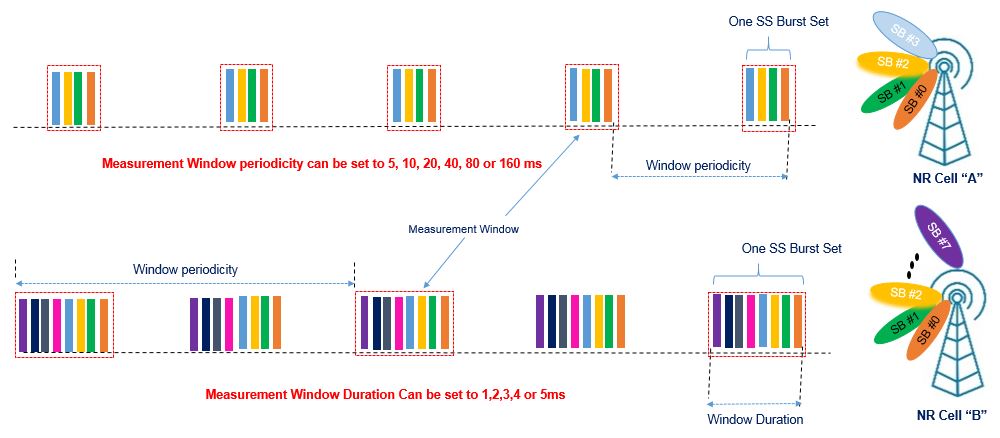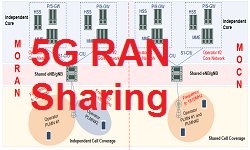5G Cell Measurement – Serving and Neighbor Cell
5G Cell Measurement
In 5G NR, for the procedures such as handover to a stronger cells or adding a new Carrier Component (CC) in the case of Carrier Aggression, it is required to measure the serving cell and neighbor cell signal strength or signal quality matrix i.e. RSRP or RSRQ. This requirement enables the measurement process to be executed appropriately, maintaining the radio link quality.
In LTE, all eNodeBs continually transmits Cell-specific Reference Signal (CRS), so it is easy for the mobile device to measure the cell quality of neighboring cells. However in 5G NR, there is the concept of CRS has be removed to reduce the overhead and Reference Signal interference from other cells.
5G NR has introduced cell signal measurement by using SS/PBCH Block (SSB), which is composed of Synchronizations Signal (SS) and Physical Broadcast Channel (PBCH) having longer transmission periodicity than CRS. The number of SSB in one burst depend on the Operating frequency. If Operating frequency (fc) is < 3GHz (FR1) the no. of SSB is 4, for fc = 3GHz to 6 GHz (FR1) no. of SSB is 8 and for fc >6 GHz mm-wave no. of SSB is be 64 within one burst.

The SSB periodicity can be configured for each cell in the range of 5,10,20,40,80 or 160 ms. However, mobile device do not need to measure cell signal with periodicity as the SSB and the appropriate measurement periodicity can be configured according to the channel condition. This is desirable and can help to avoid unnecessary measurements and reduce the power consumption on Mobile Device (UE).
3GPP specifications has introduced SSB-based RRM Measurement Timing Configuration window (called SMTC window) shall be notify to Device (UE) regarding the measurement periodicity and timings of SSBs that Device (UE) can use for measurements.
As shown in figure, the SMTC window periodicity can be set in the same range of SSB i.e. 5, 10, 20, 40, 80 or 160 ms and window duration can be set to 1, 2, 3, 4, or 5 ms, according to the number of SSBs transmitted on the cell being measured. Here we can see that NR cell “A” and NR cell “B” are measured with different window periodicity and different window duration. When a Device (UE) has been notified of SMTC window by base station, it detects and measure the SSBs within that window and reports the measurement results back to the base station. A UE does not major any SSB index out of the SMTC duration.

Meas Gap length should be greater then SMTC window length. Thus base station appropriately set the SMTC window and meas gap length based on the SSB burst periodicity.
How it is notified to UE
The measurement configuration provides UE this information with RRC message under measObjectToAddMod as part of MeasObjectNR IE. It is contains following information

- ssbFrequency: Indicates the frequency of the SS associated to this MeasObjectNR
- ssbSubcarrierSpacing: Subcarrier spacing of SSB. Only the values 15 or 30 (<6GHz), 120 kHz or 240 kHz (>6GHz) are applicable
- smtc1: Primary measurement timing configuration. It provides Timing offset and Duration for SSB
- smtc2: Secondary measurement timing configuration for SS corresponding to this MeasObjectNR with PCI listed in pci-List
SSB-MTC field

- periodicityAndOffset: Periodicity and offset of the measurement window in which to receive SS/PBCH blocks. Periodicity and offset are given in number of subframes.
- duration:Duration of the measurement window in which to receive SS/PBCH blocks. It is given in number of subframes



